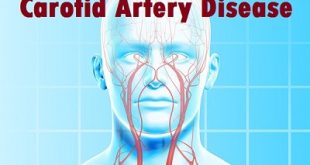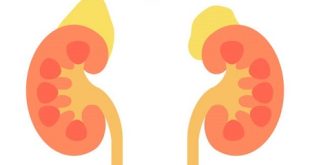What is cachexia?
Cachexia or wasting syndrome involves a complex change in the body, causing the body to lose weight and muscles. It is a condition characterized by wasting of fat and muscles; cachexia is a complex syndrome that combines weight loss, loss of muscle and fat tissue, anorexia, and weakness.
Cachexia or wasting syndrome involves a complex change in the body, causing the body to lose weight. Anorexia, which is the loss of appetite, is sometimes associated with cachexia. However, it is more than only a loss of appetite. The prevalence of cachexia ranges from 5-15% in chronic heart failure or chronic obstructive pulmonary disease (COPD) patients to 60–80% in advanced cancer patients.
Categories of cachexia
There are three main categories of cachexia:
- Precachexia is defined as a loss of up to 5 percent of your body weight while having a known illness or disease. It’s accompanied by appetite loss, inflammation, and changes in metabolism.
- Cachexia is a loss of more than 5 percent of your body weight over 12 months or less, when you’re not trying to lose weight and you have a known illness or disease. Several other criteria include loss of muscle strength, decreased appetite, fatigue, and inflammation.
- Refractory cachexia applies to individuals with cancer. It is weight loss, muscle loss, loss of function, plus a failure to respond to cancer treatment.
Mechanism
The exact mechanism in which these diseases cause cachexia is poorly understood, and likely is multifactorial with multiple disease pathways involved. Inflammatory cytokines appear to play a central role including TNF (which is also nicknamed ‘cachexin’ or ‘cachectin’), interferon gamma and interleukin 6. TNF has been shown to have a direct catabolic effect on skeletal muscle and adipose tissue through the ubiquitin proteasome pathway. This mechanism involves the formation of reactive oxygen species leading to upregulation of the transcription factor NF-κB. NF-κB is a known regulator of the genes that encode cytokines and cytokine receptors. The increased production of cytokines induces proteolysis and breakdown of myofibrillar proteins. Systemic inflammation also causes reduced protein synthesis through inhibition of the Akt/mTOR pathway.
Although many different tissues and cell types may be responsible for the increase in circulating cytokines, evidence indicates tumors themselves are an important source of factors that may promote cachexia in cancer. Tumor-derived molecules such as lipid mobilizing factor, proteolysis-inducing factor, and mitochondrial uncoupling proteins may induce protein degradation and contribute to cachexia. Uncontrolled inflammation in cachexia can lead to an elevated resting metabolic rate, further increasing the demands for protein and energy sources.
There is also evidence of alteration in feeding control loops in cachexia. High levels of leptin, a hormone secreted by adipocytes, block the release of neuropeptide Y, which is the most potent feeding-stimulatory peptide in the hypothalamic orexigenic network, leading to decreased energy intake despite the high metabolic demand for nutrients.
Causes of cachexia
Cachexia is a complex syndrome. Its exact causes may vary depending on a person’s physiology and the underlying illness associated with it.
However, some underlying factors remain consistent across different diagnoses:
- Increased metabolic rate and energy expenditure
- Reduced nutrient intake or availability
- Increased breakdown of muscle
- Prevention of muscle growth
Risk factors
Cachexia often occurs at the end stages of severe conditions.
A person with one of the following conditions should talk to their doctor about steps to take to prevent the development and how it may be managed if it develops:
- Cancer
- Chronic obstructive pulmonary disease (COPD)
- Chronic renal failure
- Congestive heart failure
- Crohn’s disease
- Cystic fibrosis
- HIV
- Rheumatoid arthritis
What are the signs and symptoms of cachexia?
The notable signs and symptoms of cachexia include:
- Unintentional weight loss: Weight loss may occur involuntarily, which means that it happens without trying. It may occur even after getting an adequate amount of calories from the diet.
- Skeletal muscle wasting: Muscle wasting is a salient feature of cachexia. Muscle wasting may occur without any changes in the outward appearance. For instance, obese people may have muscle wasting inside without visible changes in the outward appearance.
- Anorexia/loss of appetite: Loss of appetite is another hallmark feature of cachexia. Loss of appetite in this context means the lack of desire to eat food.
- Lowered quality of life: It can decline a patient’s ability to move around and participate in activities they enjoy.
Other symptoms may include:
- Pallor (because of anemia)
- Weakness and fatigue
- Shortness of breath
- Nausea
- Constipation
- Reduced sense of taste
- Electrolyte imbalance
- Frequent infections (due to a weak immune system)
Complications of cachexia
Complications include:
- Diminished quality of life and loss of the ability to live independently
- Impaired response to treatments
- Reduced immunity
- Escalating symptoms of the underlying chronic condition
- A reduced life expectancy from the underlying disease
As a result of these complications, people with cachexia have a lower quality of life. They also have a worse outlook.
Diagnosis of cachexia
Even though the symptoms and signs of cachexia are usually noticed late in the course of cancer, we’re learning that the process leading to muscle wasting begins very early on after a diagnosis of cancer. As such, cachexia is often present before any weight loss occurs.
There are several ways that cachexia can be evaluated. Some of these measures include:
- Body mass index (BMI): Body mass index describes not only relative body weight but can give more information about a healthy weight. BMI is calculated using a formula of height and weight. Since BMI does not identify the proportions of muscle mass and fat, however, it is cannot be used alone to evaluate cachexia.
- Lean muscle mass: Measuring body composition can help determine the ratio of lean muscle mass to body fat. Tests used to do this may include skin folds and bioimpedance.
- Food intake diaries: Keeping a food diary is an important activity when looking to prevent or cope with cachexia. At the same time, it’s important to keep in mind that the malnutrition of cachexia can occur even with an adequate intake of calories.
- Blood tests: Some lab tests that are useful in evaluating cachexia include white blood cell counts (WBC), serum albumin, transferrin levels, uric acid, and inflammatory markers, such as C-reactive protein (CRP).
There are a number of screening tools that look at combination of the above in order to identify cachexia, such as the Malnutrition Universal Screening Tool (MUST), though there is not yet a single screening tool that is effective in detecting cachexia in every case. Dividing it into stages or grades can give physicians a better of the natural history of cachexia, but of greatest concern is that cachexia is diagnosed as early as possible.
Despite the number of tools available, following a person over time and checking serial body weights can give a better idea of changes.
How do you treat cachexia?
Treatment of Cachexia requires intervention that will stop or slow down the depletion of muscle, enhance muscle mass, improve body weight and strength, provide nutritional support, treat the underlying disease condition with chemotherapy or immunotherapy and improve the quality of life.
The therapeutic options for treatment include:
Dietary advice & nutritional supplementation
It takes into account that the energy deficit can result in cachexia complication and hence nutritional supplementation is a logical solution, however, there is a lack of evidence towards the benefits of intensive nutrition in improving symptoms. It has shown results in patients recovering from surgery and prior to chemotherapy. Both parenteral and enteric nutrition are used in correcting the nutritional deficit of the patient.
Pharmacotherapy
- Prokinetic drugs – They help in dealing with the complaints of chronic nausea, anorexia and early satiety symptoms that result due to complications of the gastro intestinal symptoms
- Corticosteroids – They help in reducing both anorexia and weakness, however, there is no benefit toward nutritional status and the effects are short lived. They also help in reducing vomiting and improve any neurological complications.
Progestational agents
Progestational agents such as medroxyprogesterone and megestrol have been found to help with the stimulation of appetite and weight gain in cachexia patients. These drugs were fast-acting and were also good antiemetics. Even though high doses of these agents may produce adrenal suppression, they do not cause side effects such as myopathy or peptic ulcer disease, which are usually seen with the use of corticosteroids. However, progestational agents do increase the risk of thromboembolism, in contrast to corticosteroids.
Other modalities
Clinical trials are presently ongoing to identify drugs that can increase appetite and energy that can improve this clinical syndrome. Psycho social support is also advised to help in improving the quality of life of the patient.
Additionally, although not yet fully exploited in humans, research has demonstrated that targeting the hypothalamus and tumor-secreted factors might emerge as attractive options in the management of cancer cachexia.
Preventions of cachexia
Cachexia is usually a side effect of an underlying medical condition, so the focus for prevention lies in keeping the underlying chronic condition at bay. Some conditions, such as COPD or HIV, are potentially preventable.
The prognosis for patients with cachexia is usually poor especially for those who have certain types of cancer. Most forms of cancer treatment cause patients to lose their appetite and become nauseated most of the time. With decreased food intake, patients tend to lose even more weight. This prevents them from making a full recovery.
An active lifestyle with balanced nutrition may reduce the risk of a chronic condition that could lead to cachexia.
 Diseases Treatments Dictionary This is complete solution to read all diseases treatments Which covers Prevention, Causes, Symptoms, Medical Terms, Drugs, Prescription, Natural Remedies with cures and Treatments. Most of the common diseases were listed in names, split with categories.
Diseases Treatments Dictionary This is complete solution to read all diseases treatments Which covers Prevention, Causes, Symptoms, Medical Terms, Drugs, Prescription, Natural Remedies with cures and Treatments. Most of the common diseases were listed in names, split with categories.







